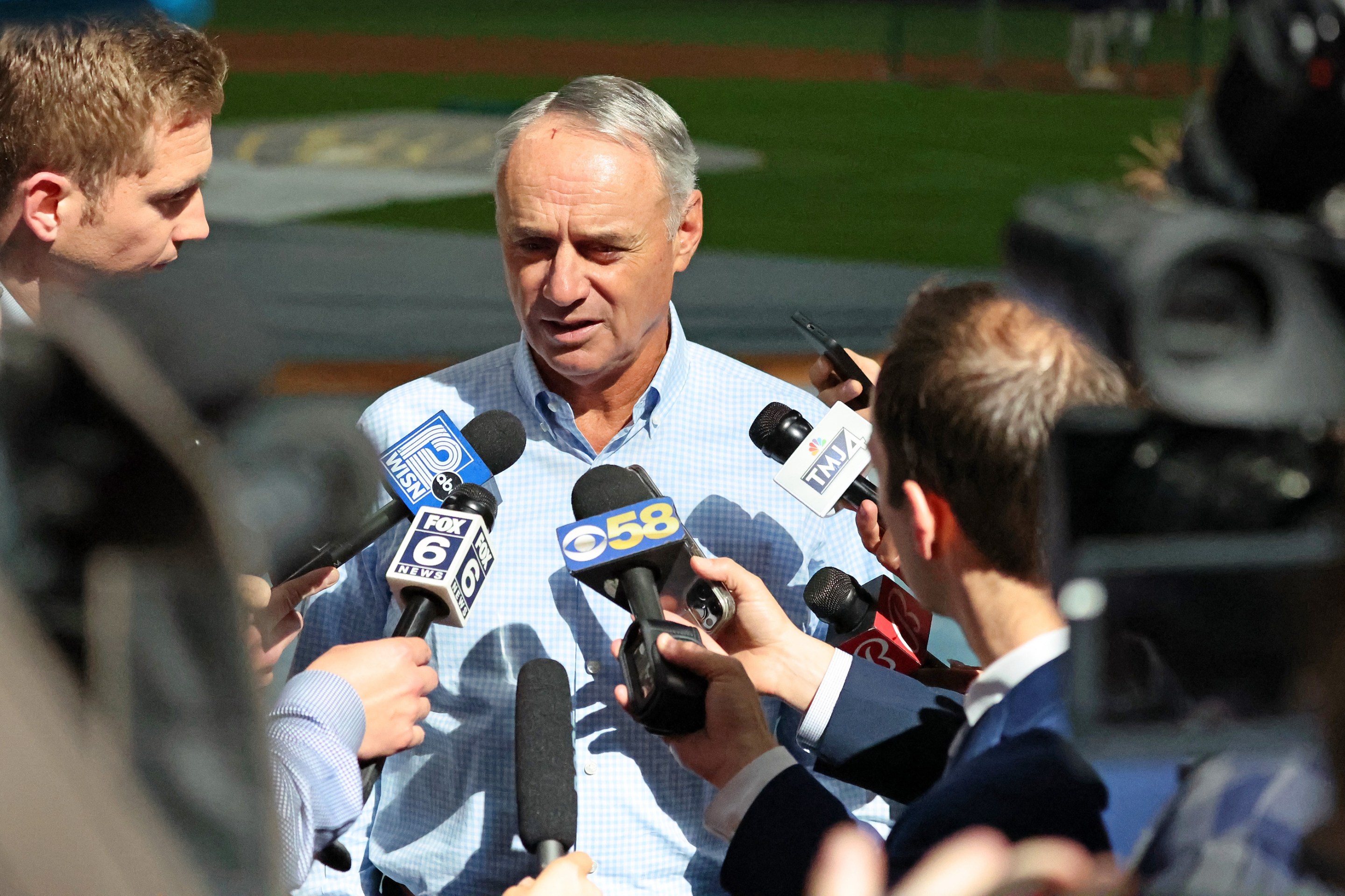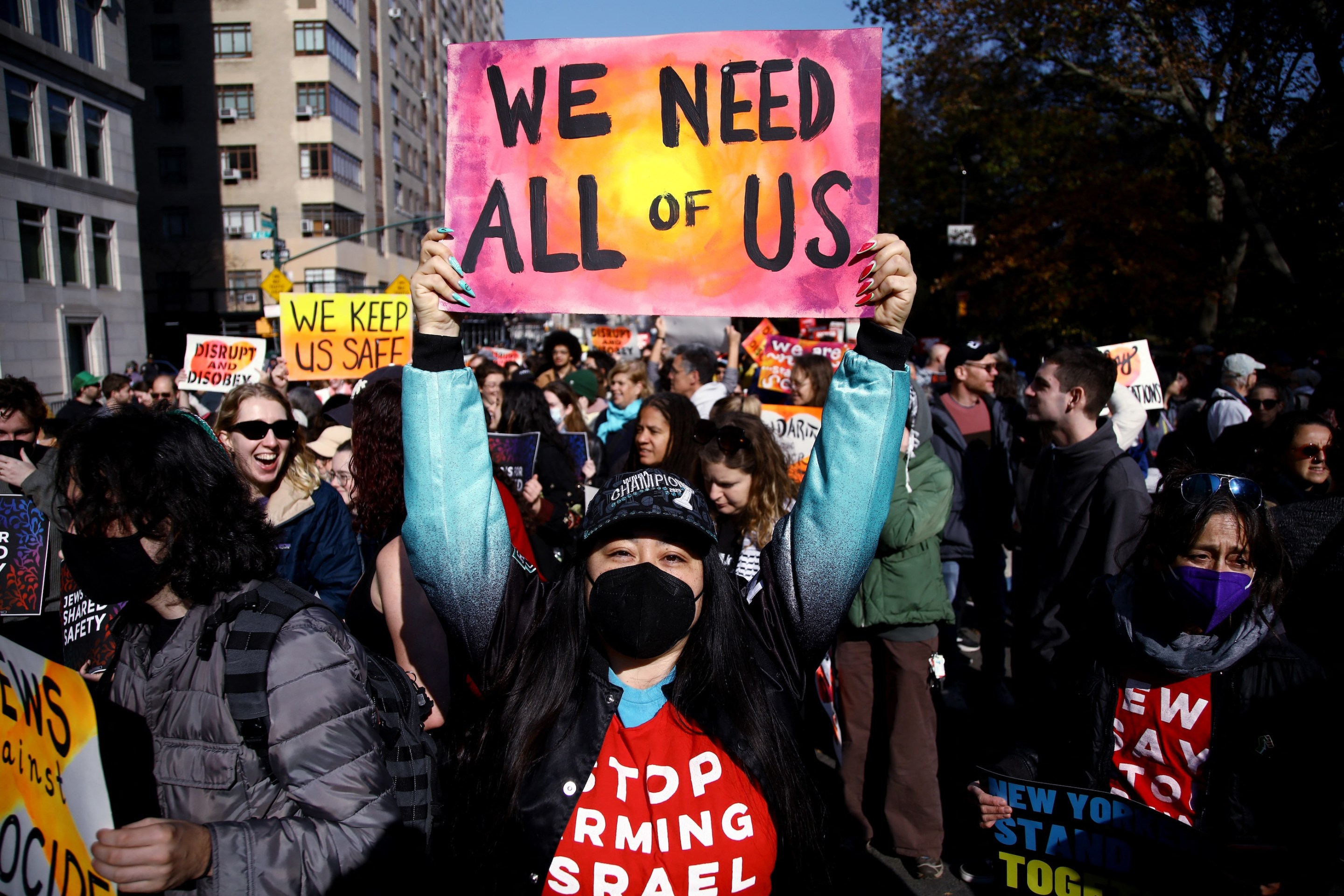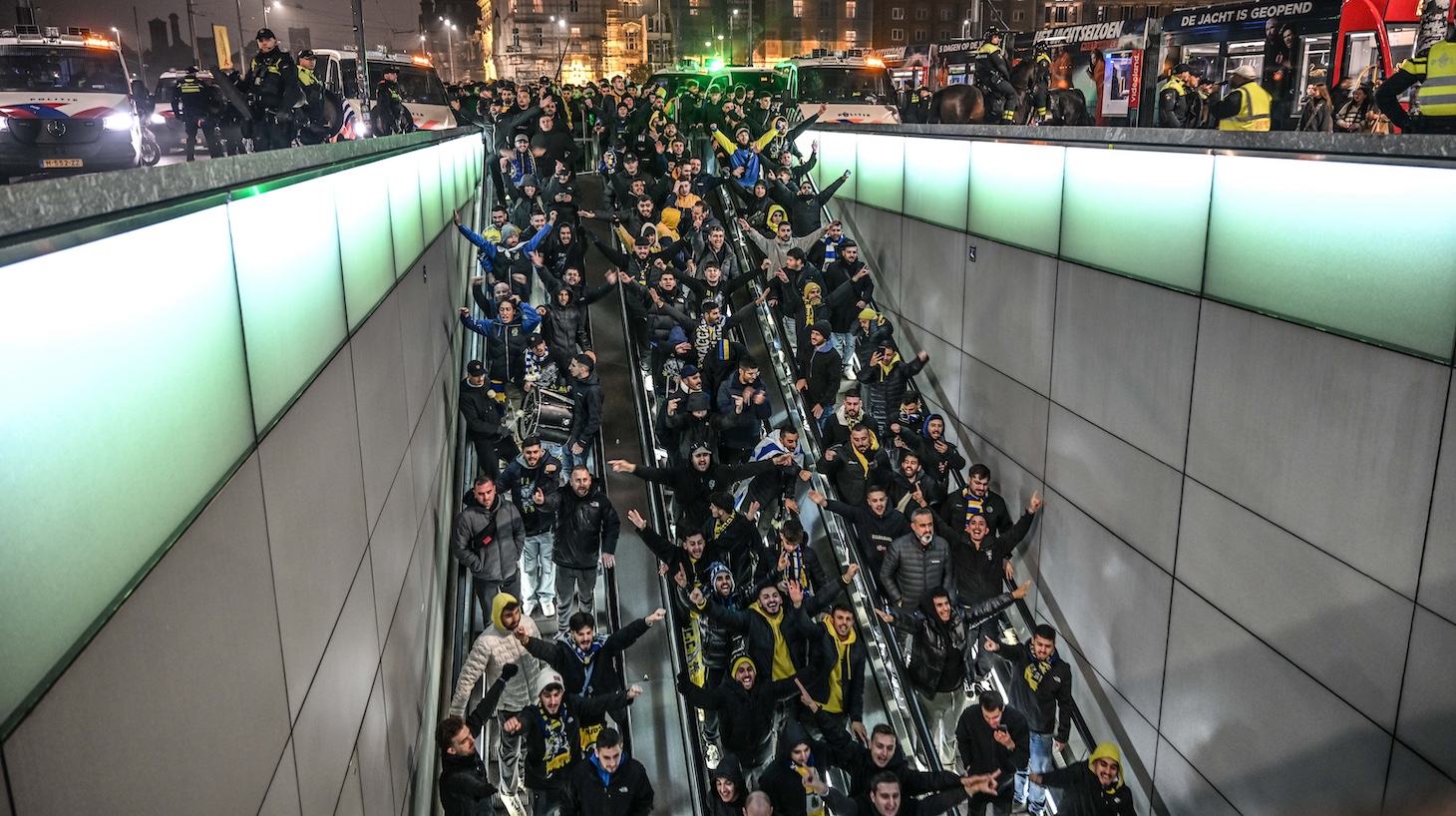Defector has partnered with Baseball Prospectus to bring you a taste of their work. They write good shit that we think you’ll like. If you do like it, we encourage you to check out their site and subscribe.
This story was originally published at Baseball Prospectus on June 16.
In her book Strangers to Ourselves, Rachel Aviv describes her experience at age six, as the youngest diagnosed anorexic in the country:
When my parents visited me, they were dismayed to discover that I had acquired a repertoire of anorexic behaviors. In addition to doing jumping jacks, I refused to sit or lie down until 9:00 p.m., my bedtime …
My parents were angry that I had fallen under the sway of older girls versed in the illness. “Until then, it had been pure mental process—it was so internal to you,” my stepmom told me. “You weren’t reading magazines and didn’t have an image of what an ideal thin person looked like.” My mom said, “I don’t think you even understood ‘thin.’
In an “Eating Attitudes List” that my dad was told to complete, one question asked whether “my teenager thinks about burning up calories when she exercises.” My dad crossed out the word “teenager” and wrote in the margins, “Did not know it then, now she does.”
Aviv was too young to grasp the underpinnings of what she notes has been called a “reading disorder,” and indeed too young to read—she learned during her hospitalization, while standing. Hospitalized with other diagnosed anorexics, all white teenage girls, Aviv mimicked behaviors and patterns she didn’t bring to the hospital, anorexia threatening to become an insidious part of her identity in a pattern that produces among the highest mortality rates of any mental disorder. In being discharged from the hospital and shedding those patterns, Aviv was able to break free “in the early phase of an illness, when a condition is consuming and disabling but has not yet remade a person’s identity and social world.” She achieved escape velocity while it was still possible. That’s not always simple; sometimes what is learned, what time imparts, can’t be shaken.
It’s 2023, and some barriers are falling—but only because the road is collapsing beneath them. The year has largely been marked by climate disaster and exploding polarity; everyone is boycotting everything. The question is when those efforts are effective, and what constitutes effectiveness. MLB stands on a precipice, weighted with a necrotizing RSN shibboleth and an indifferent younger generation. The next step is of paramount importance, because collapse is the preeminent threat of this era. The league is determined to move forward, but it’s clear the new course will have no more respect or attention for the feelings of fans. Instead, MLB continues to become calcified in its single-minded obsession for quick cash, adopting venture capital tactics that place the fan, singular and collective, behind the next return. There are no limiters on ways the league and teams can betray fans, spurning growth and the future to appease whatever billionaire is rancorous that day. It’s an illness, one the league will have an increasingly difficult time escaping as it becomes a part of its identity.
There’s really no reason for an MLB commissioner to be snide. Setting aside propriety, which brings to mind phrases such as “unbecoming of the office,” there’s little to be gained from sneering remarks besides intended offense; coming from someone in a position of power, such statements take on a taunting quality reminiscent of any given playground bully. Speaking of the A’s reverse boycott, commissioner Rob Manfred couldn’t help but get snippy:
Manfred on the reverse boycott by fans of the Oakland Athletics
— Joon Lee (@joonlee) June 15, 2023
"I mean, it was great. It is great to see what is this year almost an average Major League Baseball crowd in the facility for one night. That's a great thing."
In a sense, Manfred’s position is tenuous. He is a puppet with 30 fractious children pulling his strings, and his position calls for him to justify the actions they collectively authorize, whether or not any justification exists. With the A’s move to Las Vegas in about half a decade lurching toward an increasingly concrete reality, it behooved Manfred to acknowledge the “reverse boycott” in Oakland on Tuesday night without lending credence to those who felt it illustrated there was no reason to uproot the Athletics. The simple fact, though, is that there was little justification, which can be grasped by probing Manfred’s specious talking points. The commissioner stated that “there is no Oakland offer,” also claiming there was no site; both points are easily refuted by basic recollection or search. The true whopper was when Manfred did his job in specific, backing up A’s owner John Fisher by name to say the true culprit was a (financially) unsupportive “community.”
Manfred has no ability to say the unsaid: This move is less motivated by business sense than a desire to make a statement. As a spokesperson for the Oakland mayor’s office pointed out shortly after Manfred’s comments became public,
The reality is the A’s ownership had insisted on a multibillion-dollar, 55-acre project that included a ballpark, residential, commercial and retail space. In Las Vegas, for whatever reason, they seem satisfied with a 9-acre leased ballpark on leased land. If they had proposed a similar project in Oakland, we feel confident a new ballpark would already be under construction.
As with the Padres RSN blow-up at the end of last month, it’s pretty apparent there’s a correct party in the dispute—and this time, it isn’t the league’s side. The proposed price tag for the Howard Terminal ballpark was $1 billion, privately financed. The Nevada Senate approved a bill outlaying $380 million in public funds to the creation of a 30,000-seat ballpark at the nine-acre site of the Tropicana hotel in Las Vegas (though Neil deMause at Field of Schemes estimates the true taxpayer burden will be in excess of half a billion dollars). Regardless, the $1.5 billion price tag implies that Fisher will have to secure roughly as much private funding for the new stadium as he would have for the Howard Terminal proposal.
The unspoken elephant in the room, though, involves a much bigger price tag. The A’s sought the City of Oakland’s help in the creation of an expansive ballpark district, proposing $885 million of public funds dedicated to site improvements. The project would have been “one of the most expensive developments in the entire country.” The refusal of the city to entertain what was frankly always an unrealistic pipe dream is being provided as evidence Oakland was not serious about the A’s, because the commissioner has no space to say that his boss’s ask was outlandish, or else has accepted Fisher’s stretched rhetoric wholesale.
It was long assumed that things would eventually tilt in this direction, simply because the money was there in Nevada and not in Oakland. Indeed, one of the simplest explanations here is that the size of the Vegas market offers the A’s “a permanent spot at the MLB revenue-sharing table.” In any case, the choice reads as motivated mostly by upholding the status quo—29 other owners could have shot down Fisher’s proposal, but perhaps envisioning a potential future where they can’t come to city or local governments with cap in hand, they’ll instead forego relocation fees to facilitate a Nevada-subsidized ballpark. MLB must continue to assert that publicly funded stadiums and districts are a boon to their locales, even if the league’s aversion to other avenues of stadium funding implies it’s the party benefitting and despite the $15 million annually taxpayers in Cobb County are paying for Truist Park, according to economist J.C. Bradbury. Referring to such studies, Manfred made another turn for the facetious, saying “I love academics. They’re great.”
The thing that’s hard to square is how this actually makes the most economic sense in the long run. If the A’s had capitulated and privately financed a stadium, as the Giants (largely) did, they wouldn’t be staring at a five-year chasm with no set home, and might have a shiny new cathedral basically ready. Has grinding the franchise to a halt, and then to dust, really allowed for a better long-term valuation than actually changing the culture that drips through from ownership in Oakland like poison? The fact that the A’s are set to depart a larger media market for a smaller one for the first time since the Dodgers crossed coasts implies it’s not a typically winning proposition.
A clearer explanation comes into view when zooming out to the league and its stubborn 30-team limit. Manfred has been unequivocal that expansion will not happen until teams with current stadium issues see them resolved, which would seem a self-defeating viewpoint given every team’s home is on a different aging curve. The league’s worst stadium is a situation, and there’s always a worst stadium. The refusal of the league to expand serves as a carrot to sites like Las Vegas—a team isn’t coming unless a city or state puts money in—and a stick to intransigent local governments—play along, or risk MLB taking the ball and going elsewhere. This is how things have worked throughout Manfred’s tenure, but even from a raw dollars-and-cents perspective, it’s not clear this was the right move, given the massive blows to the fanbase in Oakland and the lacuna before things can be properly established on the Vegas Strip.
Manfred had one message for A’s fans, saying “I hope they stay baseball fans,” Manfred said. “Whatever team they decide to affiliate with.” Even without the veneer of a taunt, the statement offers little. The idea that MLB will gain fans rather than lose them over these actions appears farcical—even now, basketball fandom in Seattle remains dimmed from the SuperSonics’ midnight departure. But this is MLB’s playbook, and it again delivered the expected outcome. It just cost something of the mystique the league has long traded in, a wellspring that’s running dry. As Aviv puts it, “Over time, a willed pattern of behavior becomes increasingly involuntary and ingrained.”
Following a debacle last season in which several Rays players removed a pride patch from their jerseys, MLB this season issued an edict against putting pride-inspired logos on “actual uniforms, hats, bases,” purportedly out of “the desire to protect players.” The protection, specifically, is from “a position of doing something that may make them uncomfortable.” The rest of Pride celebration, whatever that is, is left to teams. The edict hasn’t stopped another month of backlash for any connection between MLB and LGBT communities.
It’s not that teams need to have a Pride patch, which remains something of a meaningless gesture. The notion of outright banning it in any way that would actually intersect with the field of play, though, is a concrete representation of whose viewpoints are prioritized and whose are not in this discussion. A team’s choice to support and highlight the LGBT community is at its discretion, except for all the ways in which it’s required to stay on the sidelines. The question of what a Pride night could meaningfully be for a team is reduced to additional ticket sales and merchandise that will never be represented on the field, but is still priced as if it were.
The question of whether “Baseball Is For Everyone,” as a cheery sign in the outfield at Tropicana Field proclaims, remains open, and isn’t an academic one. Several players in affiliated ball have come out in recent years, and one, Anderson Comás, remains active. In an interview given earlier this month, the White Sox farmhand noted his organization’s support as a major motivator in his choice to come out, and mentioned having received messages from numerous closeted queer players. The probability of an openly gay major leaguer, as the NBA and NFL have recently seen, increases annually. The support that player would be provided remains an open question.

It goes beyond the Dodgers’ wishy-washiness on their own Pride night, the numerous players who have come out in support of the Catholic Church(‘s anti-LGBT positions), the Blue Jays’ brief selection of Anthony Bass to catch the first pitch on their Pride night after his call to boycott companies viewed as pro-LGBT (Bass was loudly booed following his social media posts); by preferencing the viewpoints of a few outliers the league implicitly concedes who they aren’t backing. The league has been a blatantly homophobic place for over 40 years, and those barriers have become a part of the league’s relationship with the LGBT community. It would take a willful outreach to include a community the league has generally scorned, and no one in baseball is willing to do more than half-measures. Teams don’t inherently have the instinct to silence and shun LGBT players, given their primary instinct is to follow the money. But these reflexes become ingrained, the learned behaviors become identitarian. Again, Aviv: “Over time, we may internalize the faith we’d been simulating; our belief will become sincere.”
Billy Bean is MLB’s Senior Vice President of Diversity, Equity, and Inclusion. Given his position, the same job title that saw calls for right-wing boycotts of Chick-Fil-A by sheer virtue of its existence, as well as his status as an out gay man, it might be presumed Bean would issue a sure-footed statement of support for inclusion. Not quite:
We have 8,000 human beings connected to the sport as an athlete in one way or another, and you’re not going to always have 100% of those people agree on the same thing.
The important thing is deciding whom to hear, a question Bean sidestepped amid a public uproar about Pride month and the place LGBT people deserve in MLB stadiums as well as society at large. There was really no need to equivocate, given that he cannot respect the wishes of some to keep gay players out of MLB—and anything short of that would be picked apart by those determined to be aggrieved. But equivocation and delay until the dust has settled and the money has spoken is sort of MLB’s whole game. Bean disagreed that the absence of any out major-league players reflected on the league’s policy:
It’s really hard to play in the big leagues and you don’t get into the big leagues in 2023 unless you are front and center a baseball player first. And that is how an athlete would be defined … Baseball is a really hard game. And I think that it’s more about a business decision than a cultural one at the moment. And I have respect for their personal choice there.
It’s difficult not to read these comments as a slap in the face to Comás and a potential ward against any big-leaguers coming out in the future. Given how often Manfred reminds people that MLB is a business, to pit “business” versus “culture” would seem a direct impediment to any player’s career. If becoming a spectacle played a role in the Blue Jays’ decision to sever ties with Bass, this statement appears to imply that the inverse move for a gay player would be coming out while on the margins of a roster. A team would certainly receive blowback for explicitly severing ties with a player on account of his sexuality, but Bean’s statement can be read as instructing a player to explicitly remain in the closet because of the potential distraction of his orientation. It’s a poorly thought-out statement that ignores real and actual people for shadowy business interests, a nice mirror to Bean’s bosses’ statements the same day and for the current societal debate, wherein the rights of people to exist safely in public is being pitted against those who would do anything to prevent that scenario and the positions are viewed as equivalent.
Describing the sticky clutches of anorexia, and indeed mental illness as a whole, Aviv believes that “an impulsive decision gathers momentum, becoming increasingly hard to reverse.” Elsewhere, she notes the way societal effects reinforce this loop, fostering illnesses that can be lifelong and life-defining. It becomes impossible to “become someone else through sheer will.” This also describes, I think, the process by which MLB loses whatever soul it once had.
It seems, perhaps, impossibly naive to ascribe a soul to a league as consistently discriminatory and anti-labor as MLB. People used to believe in it, though: Rightly or wrongly, they thought that baseball meant something beyond a collection of business interests, a few dozen very expensive paintings that owners couldn’t torch for an insurance payout. That there was some invisible, vital cultural value to the sport, worth protecting beyond all other business through an antitrust exemption. The league had a playbook beyond “follow the money, wherever,” and as misguided as it inevitably was, it often felt like that pure mental process of following what someone thought baseball should be. The result was an abject mess, but baseball kept going, at least imbued with the faint hope things could eventually turn in a better direction (and sometimes, they did!) It’s hard to maintain that hope as MLB increasingly follows the dollar, no matter how many fans it leaves behind. The league no longer feels compelled to pretend otherwise.
MLB shut the door on A’s fans. It is presently doing the same to LGBT fans and the gay players within its ranks by refusing to offer the barest support and backing. Target and Starbucks have drawn fire for capitulating to harassment and outright threats of violence by scaling back their Pride displays and products, but MLB has gone a step further—do you see either of those companies’ executives publicly musing about whether being gay is too much of a distraction to openly balance with the job?
While the league has a history of this sort of thing, it has professed a desire to be a more inclusive place. Here is concrete evidence that desire only goes so far and as fast as the social headwinds supporting them. It’s been a year since Justice Clarence Thomas questioned whether the end of Roe v. Wade would be followed by the end of a national right to marriage for gay people, and the hostility toward the LGBT community has ramped up significantly. The mere hint that even empty support could threaten the bottom line got MLB to step back from tentative support to open ambivalence. The homophobia that has long been a part of MLB’s identity is no longer being interrogated; rather, insidious new strategies for maintaining that identity are catching on. A loop that once appeared likely to open, eventually, is being narrowed. Aviv now wonders whether she was ever correctly categorized as anorexic. She also feels that recovery would have been more precarious had she “stayed in the hospital longer or returned to a less welcoming school.” Sometimes, the door closes. But you never know when.
MLB needs to change to be relevant for the future. Basically no one disagrees with that, but a more tenuous query is what relevance means. The steady influxes of cash and continuous franchise appreciation afforded by lucrative RSN deals are at risk, and it’s necessary to envision a new future where teams are constantly justifying their existence and earning fans’ support, rather than taking it as a given. All the league has to offer as evidence of its course are shunned fans and shattered dreams. It becomes difficult to imagine things ever changing, to think that the league’s attitude to fans will not become ever more cynical and disaffected. Aviv says that “there are stories that save us, and stories that trap us, and in the midst of an illness it can be very hard to know which is which.” The league is very ill.





